#science outreach
Text
I spent the day and again today doing neuroscience outreach at a huge event my work puts on. Holding a human brain in my hands and talking about it to tons and tons of people. I'm having some feelings about it and wrote it down.
Thank you, beautician who died of dementia at 82, for donating your body to science. Your beautiful brain has educated so many thousands of people. So many eager-eyed kids, so many fascinated adults. I hope this is what you had in mind. I hope it's better. I hope you feel proud of my science outreach work with your lovely brain. I hope the dozens of kids that have decided to study more about how the brain works are a worthy legacy in your eyes. I hope you love your "afterlife". I love spending time with you and sharing what I know about you and your wonderful brain.
21 notes
·
View notes
Text
I love a lot of things about my job but I think my favorite by far is how my coworkers blow up our team group chat with chatter and excitement about current goings on at NASA. New JWST images. New research released. We screamed and cried and keysmashed during the Artemis 1 launch.
Currently? Orion capsule splashdown.
There's just something special about having a group of people in brickspace that you can geek out with over this kind of stuff.
#nasa#orion capsule#orion splashdown#artemis 1#artemis program#artemis mission#fox thoughts#science outreach#steam outreach
41 notes
·
View notes
Text
Whoops. Going to be up all/most of the night upgrading all my Lab Safety & Biosafety online courses, so that the Chair of my dept can sign my certs tomorrow, so that I can then run them back to my office, scan the signed copies, and attach them to a science outreach funding proposal by noon...
Let the nerdery commence. With a big pot of tea.
9 notes
·
View notes
Text
SCIENCE EDUCATION NONPROFIT FUNDRAISER POST
DONATE HERE
Hey everyone, I run a science education nonprofit in Florida called Sidewalk Science Center. I created SSC back in July 2018, and to this day, host FREE sessions of science experiments, telescoping, and other forms of science outreach 3-4 days per week. We do this at playgrounds, parks, beaches, outdoor malls, and other public spaces.
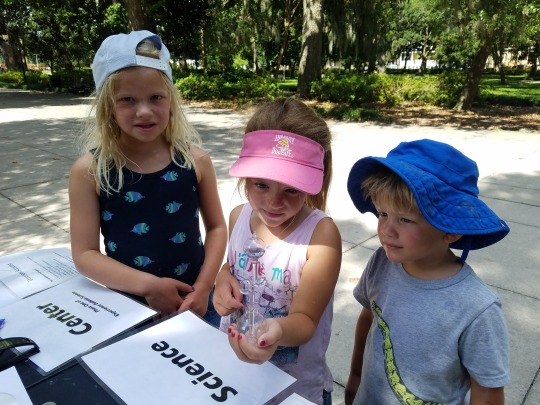

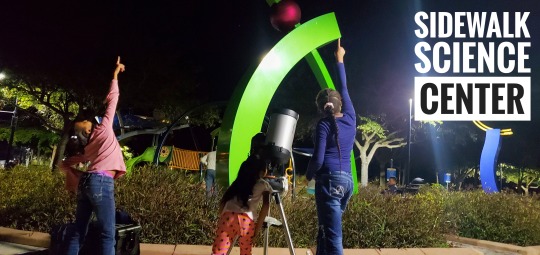
The mission of SSC is to provide regular and reliable access to educational tools and resources in public spaces. As of this writing, I have personally hosted free sessions of SSC a total of 390 times, as well as more than five dozen private events for families, the Girl Scouts, schools, and other organizations. In mid-November, I saw my 50,000th visitor!
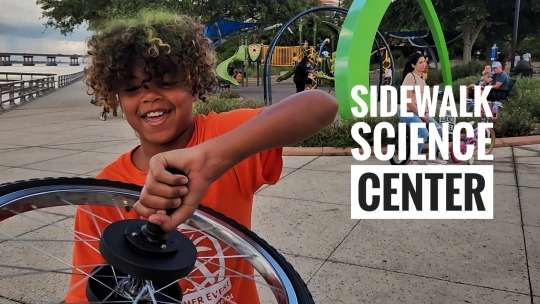

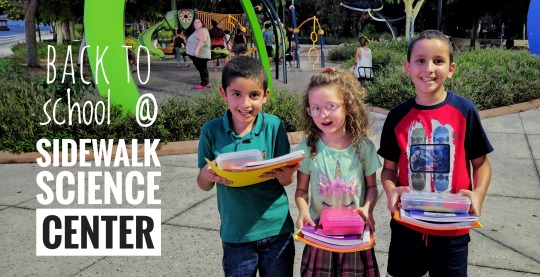
We're in the middle of our end-of-year fundraising campaign. We have a goal to raise $5,500 by December 31, 2022. These funds will cover all of our expected business operation costs for 2023. As of this writing, we have raised $1,932.54, which is 35% of our goal. This amount alone covers all of our website, email, insurance, printing, and data storage costs for 2023, plus some of our physical and online marketing costs for the upcoming year.
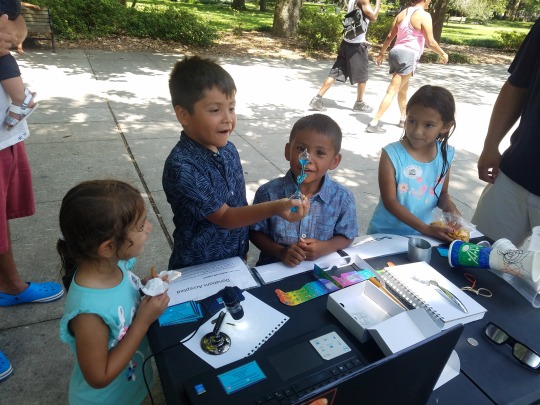

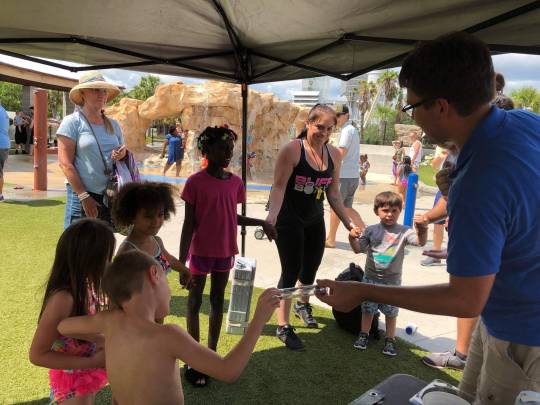
One of our larger purposes for doing this is to increase scientific visibility, literacy, and overall engagement. Science is often relegated to schools and museums, but where else do we encounter it on a day-to-day basis, actively thinking about and practicing it? By placing SSC in spaces where people already visit and congregate, we hope to help improve the interest, support, and ability in science literacy throughout all levels of society.
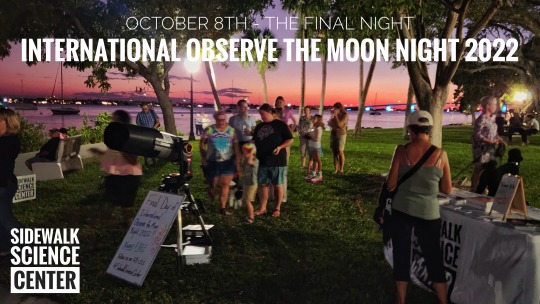


In 2023 we will also start gathering volunteer educators to operate standard SSC sessions. We will also offer paid positions through our volunteer base, as a significant source of our revenue comes from paid private events. All educators will take our self-designed training courses that cover performing public science outreach, public science communication, and how to navigate and maintain civil discourse with pseudoscientists and misinformation in public spaces.



Going forward, we want to open regular SSC locations around the state of Florida, the US at large, and eventually, the world. Creating these spaces has been an incredible experience that truly impacts the communities we serve, and levels the playing field for underprivileged communities, allowing everyone to use resources and have experiences they otherwise might not have access to at home or even school.



Please consider making a donation to help cover these 2023 expenses (viewable on the donation page). A minimum of $5.00 is required using the DonorBox.org form, but you can also support us on Patreon for any amount.
Disclaimer: while recognized as a nonprofit in the state of Florida, Sidewalk Science Center is not yet federally recognized as a 501(c)(3) corporation. We are actively working to achieve this designation. As such, any contribution you provide is NOT tax deductible at this time.
Website: www.sidewalksciencecenter.org
FEIN # 92-0360191
Facebook | Instagram
Thank you for your support. One day, you might come across a Sidewalk Science Center in your own town! Right now we are headquartered in Bradenton & Sarasota, Florida. We are in the works to create a west coast tour in October of 2023, with plans to go through Seattle, Portland, San Francisco, Los Angeles, San Diego during our trip to watch the October 14th Annular Eclipse at Crater Lake. Maybe we'll see you there!
DONATE HERE
We have a future to create.
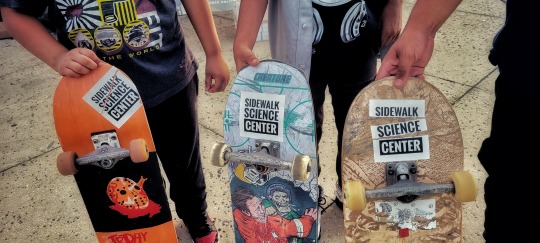
#education#astronomy#science#learning#science outreach#education outreach#sidewalk science#sidewalk science center#bradenton#sarasota#st. pete#florida#community#teaching#science education#tumblr
9 notes
·
View notes
Text
People think all scientific research is done on these fancy but incomprehensible machines and data is always presented as modern, advertising-level graphics... When really it's mostly somebody's homemade program with no UI run through linux shells, 90's and 2000's era government databases, Pepe Silvia stringboards and confused silence from colleagues, everyone using the one computer that actually has a license to the only good statistics and graphing program, and sharpie marked diagrams and taped into $2 comp notebooks
#science#research#science outreach#mars speaks#photos from work just look like photos from a slightly cleaner biosafety equipped garage
4 notes
·
View notes
Text
Very much encourage emailing professors from local schools if you have a scientific question you want to ask but don't know where to go. Profs are the biggest enthusiastic nerds in their field and so are usually happy to answer questions about it. Being local is important if it's a question about the area (like the nature or whatnot) but really it could be elsewhere if you want.
Most university websites will have pages on their faculty, who each prof is and their contact info (usually an email but I've seen office extensions too, if phone calls are your jam). Using the pages, you can find profs who specialise in the question you have (like an ornithologist for a bird question, lets say).
For example, I noticed that certain healthy trees in my local area were suddenly dying en masse and I didn't know why (was it the weather? Climate change? An invasive bug?). I don't study trees but a university a town over has a forestry department, and so I looked into their profs to see who does. Found this one prof who specialised in trees and climate change, and sent him an email asking my question. Within a couple of hours he gave me an answer :)
So yeah, you've got questions about the world? About science? Papers are too hard to understand and google is being unhelpful? Then email your local profs!! Most of the time they will be happy to help, and you'll learn a lot as well :)
#science#science outreach#professors#university#in the states unis are colleges so thats your best bet over there#nature#pocket goblin rambles
1 note
·
View note
Text
Barbara Gordon's Coding & Computer Cram School is a popular YouTube series. Tucker Foley is a star student.
Barbara Gordon's Cram School posts free online courses for both coding and computer engineering. Think Crash Course in terms of entertainment, but college lecture in terms of depth. Hundreds of thousands of viewers flock to it— students who missed a class, people looking to add new skills to a resume, even simple hobbyists. It’s a project Barbara’s proud of.
Sometimes, when she wants to relax, she’ll even hop in the comments and spend an afternoon troubleshooting a viewer’s project with them.
User “Fryer-Tuck” has especially interesting ones. Barbara finds herself seeking out his comments, checking in on whatever this crazy kid is making next. An app for collecting GPS pings and assembling them on a map in real-time, an algorithm that connects geographic points to predict something’s movement taking a hundred other variables into account, simplified versions of incredibly complex homemade programs so they can run on incredibly limited CPU’s.
(Barbara wants to buy the kid a PC. It seems he’s got natural talent, but he keeps making reference to a PDA. Talk about 90’s! This guy’s hardware probably predates his birth.)
She chats with him more and more, switching to less public PM threads, and eventually, he opens up. His latest project, though, is not something Barbara has personal experience with.
FT: so if you found, hypothetically, a mysterious glowing substance that affects tech in weird and wacky ways that could totally have potential but might be vaguely sentient/otherworldly…. what would you do and how would you experiment with it. safely, of course. and hypothetically
BG: I’d make sure all my tests were in disposable devices and quarantined programs to keep it from infecting my important stuff. Dare I ask… how weird and wacky is it?
FT: uhhh. theoretically, a person composed of this substance once used it to enter a video game. like physical body, into the computer, onto the screen? moving around and talking and fighting enemies within the game?
FT: its been experimented with before, but not on any tech with a brain. just basic shields and blasters and stuff, its an energy source. also was put in a car once
FT: i wanna see how it affects software, yk? bc i already know it can. mess around and see how far i can push it
BG: […]
FT: … barbara?
BG: Sorry, thinking. Would you mind sharing more details? You said “blasters?”
Honestly. Kid genius with access to some truly wacky materials and even wackier weapons, she needs to start a file on him before he full sends to either hero or villain.
[OR: Tucker is a self-taught hacker, but if he were to credit a teacher, he'd name Barbara Gordon's Coding & Computer Cram School! He's even caught the attention of Dr. Gordon herself. She's full of sage advice, and with how she preaches the value of a good VPN, he's sure she's not pro-government. Maybe she'll help him as he studies the many applications of ecto-tech!]
#she does end up sending tucker a PC lol#and after she learns he has experience supporting a superhero team maybe pushes his name forward to WEs outreach program for r&d potentials#picks him up by the scruff and says MY coding buddy#also fun fact she had a phd in library science at one point. i like that about her i think we should talk about it a little more#also tucker was making a ghost reporting & tracking app for amity parkers#dpxdc#dcxdp#barbara gordon#tucker foley#prompt#kipwrite
560 notes
·
View notes
Note
I really want to work for NASA but I do not have a background in science or engineering. Are there any career paths at NASA that I could still achieve?
#NASA#FlightDirectorAT#food#finance#commercial space#education#outreach#you could join the social media team#hint hint#non-science jobs#answertime
357 notes
·
View notes
Text

Exciting news: my podcast is back!
In 2018, Gabriel Ugueto (well known palaeo-artist and former herpetologist), Ethan Kocak (New York Times best-selling cartoonist and herpetoculturist), and I (a talkative herpetologist) decided that the world needed a herpetology-focused podcast that featured the latest big news in herpetological research, and took some deep, jargon-heavy dives into the nitty gritty of it all. So we started the SquaMates podcast.
We had a great deal of fun making the podcast, but in the wake of the panini, we struggled to find time for the show and coordinate recording schedules, and the show had to go on hiatus.
But now, after nearly two and a half years, we're back, and I venture to say we're better than ever! Hiral Naik, a snake ecologist from South Africa, has now joined us as a permanent co-host. Moreover, we're now recording and releasing the show in video on YouTube, as well as over normal podcast streams!
Episode 22 will drop on YouTube and podcast apps on Monday 12 February at 10:00 EST, 16:00 CET!
You can listen to the backlog at squamatespod.com, or on apple podcasts and other podcast apps.
I hope you enjoy the show!
354 notes
·
View notes
Text
really hate when mainstream astronomy journalism does this
https://www.cbsnews.com/news/saturns-rings-disappear-from-view-march-23-2025-nasa-expert-says/

this entire article feels like it's written from the perspective of a space skeptic getting confirmation from nasa that it's real
even in the title, they say "nasa says" like the new york times says "palestinians say"
the entire article would come off so much better if any of this (correct!) info was said with like 1% confidence in it, it legit feels like they intentionally included the "nasa says" parts to feed into pseudoscience. it comes off so horribly to anyone with some knowledge of astronomy
"Saturn's rings will seemingly disappear from view in 2025" the addition of "seemingly" here is totally unnecessary and only adds more apparent skepticism from the author (and by extension, the reader)
"Saturn won't actually lose its rings in 2025, but they will go edge-on, meaning they will be essentially invisible to earthlings, NASA confirmed to CBS News." correct info, but adding "nasa confirmed" instantly makes us think this was just a random theory before nasa told them that it's true, when it is not by any means a random theory
the article gets noticeably more scientific as it goes on, which makes it even worse that they put the most clickbaity skeptical stuff in the headline and opening paragraphs
it perpetuates the weird idea that info about astronomy in particular is like, sacred to people that are in the field, and can't be reported on without contacting 5 people at nasa to confirm it in your article
it's so wrong because most stuff about basic astronomy is totally definitive and can be predicted 100% of the time using basic math, we shouldn't need top scientists at nasa to confirm that there's a full moon coming up on the day the moon will be full (something i have actually seen happen!)
and overall, it also perpetuates the general stigma on astronomy as somehow harder or more complex than most other fields, something that average person can't get into and that's reserved for genius level intellects
not great stuff cbs!
#astronomy#space#night sky#news#astronomy thoughts#space thoughts#science communication#public outreach
340 notes
·
View notes
Text
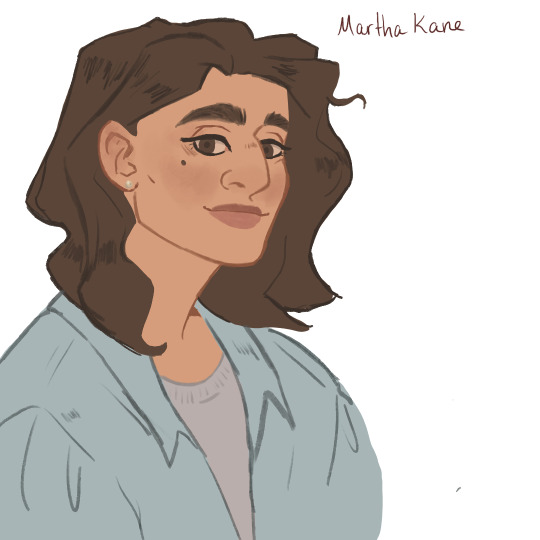
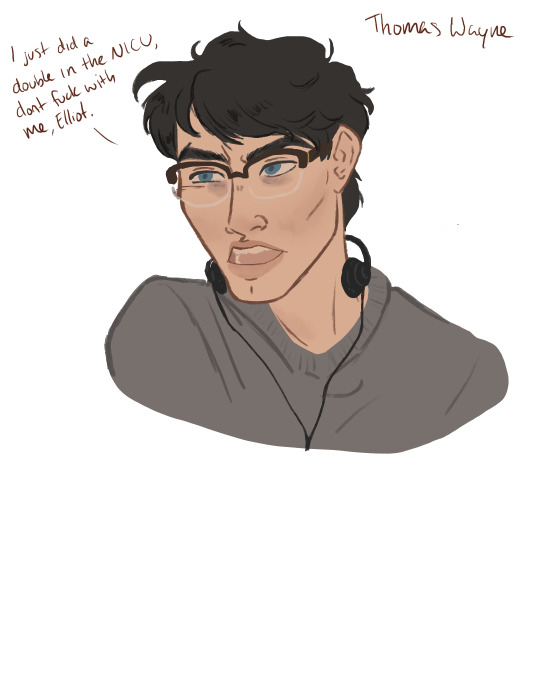

I need more Martha content
It’s always Thomas who gets the storylines and stuff like where’s my girl???
#martha wayne#in my head she’s got a masters in political science so she can run successful outreach programs and charities#martha kane#bruce wayne#baby bruce#the last pic is inspired by some pictures of my mom after my brother was born#my art#jewish bruce wayne#Martha saw a sarcastic sleep deprived Thomas Wayne and thought ‘yes I want that one’#dc comics
548 notes
·
View notes
Text
#good news#science#nature#environmentalism#environment#animals#conservation#bugs#butterflies#uk#public outreach
10 notes
·
View notes
Text
I just had an amazing time during an interview about fight against harmful bacteria, use of antibiotics in cancer treatment, how physics helps in biomedical research, and more. I cannot wait to read the final article!
I felt seen, welcome, and appreciated.
#science#outreach#interview#magazine interview#talking science#antibiotics#physics#stem#feeling appreciated#feeling good#original content
5 notes
·
View notes
Text

Featured Exhibitor: The Cosplay for Science Initiative is a science education group founded by a group of scientists who love to help audiences discover the science in their favorite fandoms and franchises! They are bringing their pop-up museum, "The Galactic Archive" to Legends Con! Discover how life on Earth inspired aliens in a galaxy far, far away in Cosplay for Science's Star Wars-inspired pop-up science museum! See real museum specimens and meet our team of Jedi and galactic archivists (aka scientists)!
Buy your tickets to Legends Con by August 29th on Eventbrite: https://www.eventbrite.com/e/legends-consortium-2023-tickets-541786186067
Join us for a celebration of all things Expanded Universe in Burbank, California on September 9th & 10th. Our growing guest list includes Randy Stradley, Matthew Stover, Michael Stackpole, Jason Fry, Corinna Bechko, Sean Stewart, Barbara Hambly, Abel Peña, Craig Miller and Joe Bongiorno.
#Jedi Archivist#Star Wars Lore#STEAM#EPO#STEM#Science Is Fun#Cosplay For Science#STEM Outreach#Jedi Archives#The Galactic Archive#Expanded Universe#Star Wars Expanded Universe#Star Wars Legends#SWEU#Star Wars EU#SW Expanded Universe#LegendsCon#Star Wars Books#Star Wars Comics#Star Wars Games
9 notes
·
View notes
Text
Clear skies = astronomy eyes.
Find Sidewalk Science Center at the Bradenton Riverwalk playground most Tuesdays for science experiments or telescoping.
Here are some people who joined us last night!
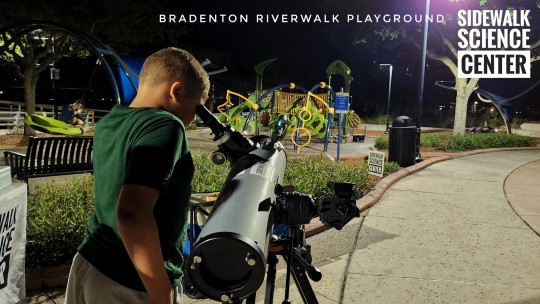


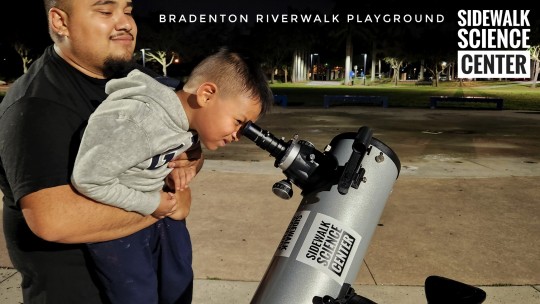
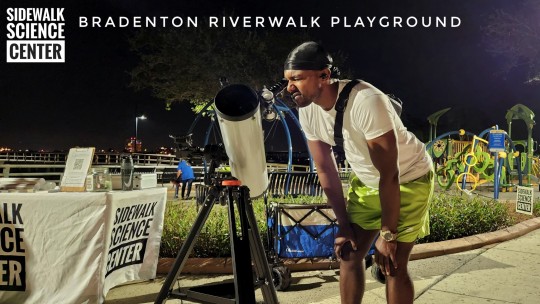
We're proud to host free educational experiences every single week! We currently have 25 experiments and demos in our rotating lineup, as well as our sidewalk astronomy nights that account for about 50% of our outreach.
If you're able, please consider donating to our end-of-year fundraiser to help prepare us for 2023:
Donate Here
#Sidewalk Science Center#Sidewalk Science#Science#Astronomy#Sidewalk Astronomy#Telescope#Moon#Science outreach
2 notes
·
View notes
Text
To Bennu and Back - A Personal Voyage
The following was originally posted to my Medium on November 5, 2023. I figured the good people of Tumblr would enjoy a story, and some ramblings from my mind - so here we go. Please do remember to check me out elsewhere, most social media I have is under the same "nikproxima" handle. Without further adieu...
Today, in a rare moment of free time, I went and spent an hour in a museum. The Smithsonian’s Museum of Natural History has, for a long time, been a place where I’ve come to marvel at the wonders of our world — a place that shaped my long standing appreciation for science and technology. But today, I went to see a visitor from another world, a visitor who in many ways I had already met a few months prior — a piece of the asteroid Bennu, delivered to Earth by NASA’s OSIRIS-REx spacecraft.
I remember how cold it was that morning, deep in the salt flats of Utah, away from the lights and bustle of Salt Lake City. September in the desert is not always the kindest, it can be 80ºF or 30ºF all on the same day. It felt so alien, yet, somehow right for a pinpoint landing from deep space. My photographer Matt and I left the sprawling suburbs behind as we wove through the mountains and brine filled pools, singing along to music we had discovered a mutual interest in. The dark voids of landforms stood over us as we negotiated the twisting freeways, soon spitting us onto a two lane highway. We spent an hour and a half on our drive, checking and rechecking NASA’s Twitter for information about the mission until my cell service was reduced to one bar. There was a degree of confidence not found in rocket launches present that morning. We’d both covered launches in the past, and were acutely aware of the sensitivity of these great machines. Delays are the name of the game, but not today. This was happening, and we were powerless to stop it should anything go wrong.
The road we had taken through the inky expanse was narrow and dark, not a light to be seen. Only the ever dimming glow of the city we had left behind, and the ever brightening stars above us. We tried our best to pick out constellations and planets, craning our necks to see through the windshield. It was an alien world, and we were diving head first into it. There are no lights welcoming you to a military proving ground, only signs for you to stay away. Dugway is not exactly a friendly place, a complex and deeply secure military base lodged in the hostile flat expanse of the desert. Every element of our arrival was strange, the friendly welcome of NASA and University of Arizona officials contrasted strongly by the Army personnel. I can only imagine how strange it would have been for the staff of this isolated facility, watching a gaggle of press officials descending upon them.
As we filed in, through checkpoint after checkpoint, we found ourselves cemented in the thick of it. Officials from NASA, Dugway and UofA were eagerly counting off milestones. The spacecraft, having deposited its precious cargo, conducted its diversion maneuver as we sat on the dark and cold bus out the press site — truly alone. The spacecraft was off on the next part of its grand adventure, an exploration of the asteroid Apophis. But we were alone, just like those precious samples hanging over our heads. The press site was still dark when we arrived there, floodlights from the airfield bathing it in an eerie artificial glow as the sun threatened to creep over the distant mountains. Matt and I were quick to scour the place for a cup of coffee. The press tent was warm, warm enough to threaten to lull you to sleep — but there was too much excitement in the air. We were here, where we were meant to be, and those samples were coming. The flight line was adorned with helicopters, sleeping beasts equipped with cameras and other sensors to hunt for this precious treasure from deep space. We had a long wait before showtime.
I spent a good portion of this time speaking with Dr. Danny Glavin, from Goddard Space Flight Center in Maryland. Many of the questions he faced centered around the upcoming Mars Sample Return mission, a complex and expensive program proving to be a headache for many involved. He spoke to me with a genuine kindness and excitement for this mission, and missions to come. The desert’s silence was broken by the sound of rotor blades, as the four helicopters came to life, beginning their trek towards the staging area. This was a complex operation, practiced over the 7 years this spacecraft had been roaming the Solar System — becoming all too real this chilly September morning. It was getting closer now, closing seemingly impossible distances over our heads. I cannot describe the emotion I felt as the last helicopter left, threatening to topple us with the force of its rotor wash— somewhere between excitement and dread.
Somewhere up above us, two additional aircraft joined the hunt. A WB-57 and a modified Gulfstream business jet, each equipped with heat seeking and high resolution cameras, began orbiting the landing site in search of their prize. In the tent, we counted down the seconds until the start of entry interface, the moment in which the samples would make first contact with the atmosphere — watching the landing timer tick towards zero. In the skies of Utah, the SRC was suddenly met with the force of the atmosphere once more, something it last felt 7 years prior at liftoff. This is where I felt the extent of my helplessness, watching this tiny blip on the 57’s FLIR imager. In that moment, I felt truly united with everyone in the room — sitting in wait, and clinging to hope. The press site was dead silent, save for the commentary from the livestream being broadcast to the world a few hundred feet from us. I was busy tweeting, commenting everything that I heard and saw from the official Space Scout Twitter. I think I wanted to throw up the entire time, and could only barely bring myself to look. At 7:39 from landing, we heard it: “PARACHUTE DEPLOYMENT”. The press site felt energized, whoops and cheers, but there were milestones still to come, and the crash of the Genesis mission all those years ago still sat in our minds.
I don’t think the fear stopped until we touched down. The footage was too grainy for us to really make out what was happening against the desert, obscuring the SRC from view. Hearing “CONFIRMATION OF SRC TOUCHDOWN” was unlike anything I had ever felt. I had watched robots land on Mars, ships launch to the International Space Station, but this was here, returning to Earth. What a unique accomplishment that was, to not only make the trek across our Solar System, but to return to the place that created it. As the chute settled, and the teams were able to get closer, the noise returned. The press site was alive once more, people hugged and cried — all overjoyed with a sense of pride and achievement. Humans combined all their knowledge and brain power and talent and built this spacecraft, sent it to an asteroid a billion miles away, beat the odds, rethought our knowledge of the solar system, all before making the billion mile voyage back in order to get something that weighs less than a baseball into labs around the world. We were home.
It was, however, a strange homecoming. Coming home to a planet so different from how it was 7 years ago. So much had changed, as is the case in the information age. A globally connected world moves rapidly, and change is all around us — Nowhere was the notion of a pandemic, war, let alone the personal change in my life. Scientists describe samples like this as a time capsule of sorts, a look deep into our past to tell us what we’re truly made of, a unique and untouched look to how things once were. In 2016, when OSIRIS-REx lifted off, I was just starting college, a nervous wreck of an individual not quite ready for the real world. I was so unsure of what I wanted to do, I spent months agonizing about myself, my identity and the meaning of it all. But spaceflight distracted me, and ultimately motivated me towards my goal of telling stories and being a part of it. I watched this mission launch from my freshman dorm room, unable to fathom that 7 years later I would be at its landing, waiting with open arms for this precious piece of the universe to be returned. As the samples were flown back under the long line of the helicopters, a strange feeling started to creep over me. A great cosmic emptiness, a feeling that everything that I did was in vain, that despite my presence for this tremendous event, it was all for nought. This new fear, one of failure and regret, threatened to overpower me. I found myself far less social, drawing the curtain around myself — no longer as excited to be there. As we left the press site after a safe delivery, and said goodbye to all of our new friends, a strange feeling of emptiness settled over me.
My trip back to Washington was full of this line of thinking. I spent a good amount of time wondering about the scale of it all, feeling smaller than I ever had as I stared out the window of the ancient 757 that carried me home. The vast distances of the cosmic ocean, for the first time, threatened to overwhelm me and swallow me whole. Work quickly picked back up for me, and I made preparations to leave for the launch of NASA’s Psyche mission, a voyage to a metal world that alongside OSIRIS-REx, aimed to unlock the secrets of our solar system. But something still remained, this fear of the great unknown. Even as the spacecraft left the pad, I could not help but think back to the Utah desert, and the growing fear of the dark.
It was not until November 5 that I realized that this fear sitting in my gut was not some great eldritch horror. I was not afraid of the unknown, rather, I was afraid of my own change. This unusually warm November afternoon, I braved Red Line closures and crowds to catch a glimpse of the OSIRIS-REx sample, a measly fraction of what had been scooped up from this distant world. It was, in many ways, unremarkable. A grey rock sitting in a grey container in a glass case, flanked by models of the spacecraft and the Atlas rocket that launched it all those years ago. No longer was it separate from me, some unknowable cosmic entity, but a thing I could perceive. I did not stay long, taking only a few pictures before stepping out into the autumn breeze — but I found myself unable to go very far.
That fear, the one I had equated to the unknown for so long, was revealing its true form to me in that moment. It was a fear of change, a fear of the rapid progression of my life, a fear of growing old — where this cosmic morsel was already ancient. It had survived for hundreds of thousands of lifetimes, perhaps even longer than humans had been on this planet, and it had remained largely unchanged. It was so immune to change, until it was literally plucked from the heavens and brought back to Earth. And then I realized — the change that we enacted on this speck from space opens our world, changes our line of questioning, enables us to uncover more about our past. And that’s what change is like at the human level, too. Without this change, I would not be who I am today, a person shaped by experiences; triumph and defeat. I would not have the ability to question my world, and shape my inquiry as I have without change. For so long, I struggled to find a purpose — often curious as to why I was even here. Truth be told, I may never know the answer. But these great cosmic moments in life, be it a rocket launch, a sample return, or getting the chance to talk to the people who will be voyaging to the moon, remind me that change is part of it all. That’ll help me sleep at night, I think.
#writing#space#science#osiris-rex#travel#journalism#exploration#personal#emotional#science communication#scicomm#outreach
3 notes
·
View notes